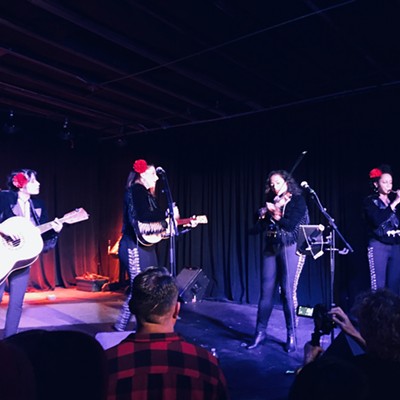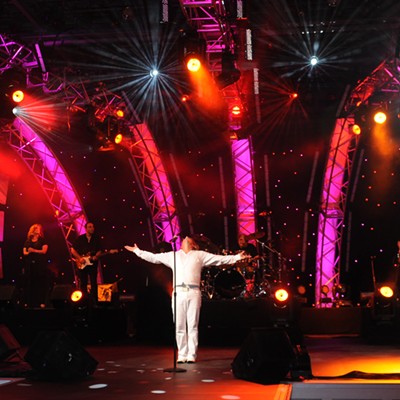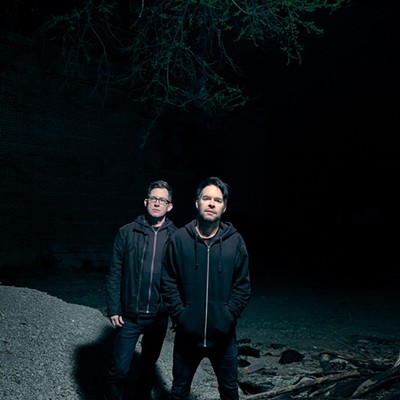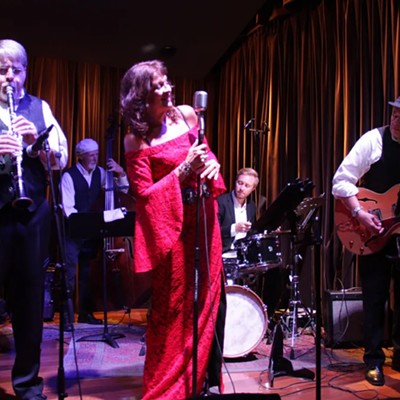What helped with the diffusion of mariachi music, says Fernández, "is the educational system and mariachi conferences such as the Tucson International Mariachi Conference ... which has had a phenomenal impact on the diffusion of this genre throughout the U.S. because it wasn't just a mariachi concert, it was a mariachi conference that brought people to workshops."
These programs were then introduced into the schools as music education programs from elementary school to colleges. "Twenty years ago there may have been two schools in Tucson that offered mariachi music education. Now there are probably 25 or 30," says Fernández, including programs at the University of Arizona and Pima Community College.
One of the United States' first youth mariachi groups, if not the first, according to the members of Mariachi Cobre, was Los Changuitos Feos de Tucson (Tucson's Ugly Little Monkeys).
Father Charles Rourke started Los Changuitos Feos in 1964 at what was All Saint's Parish, which now serves as a community center. "He wasn't Mexican," laughs Fernández, who points out a Canadian priest assigned to the town of Cuernavaca, Mexico, was credited as being the first to introduce the concept of the Mariachi Mass in the 1960s.
"Priests who have seen or understood the importance of culture or Mexican music ... have said why not bring it into the church," says Fernández. What makes the introduction of this music into religious services particularly impressive is that mariachi music has been looked down upon as lowbrow "because its historical origins as street music or bar music."
Traditionally, however, that's where you can hear the best mariachi music, not onstage with an orchestra, but at fiestas, baptisms and weddings, says Fernandez. "Consequently mariachis [originally] dressed as country men did at the time ... with white shirts and white pants in huaraches."
The formality that one will now see in the Mariachi Mass didn't come about until 1905, when the first mariachi musicians were invited to play for the then-President of Mexico, Porfirio Diaz. "The director of the mariachi dressed the group in the Sunday church-going clothes of the Jalisco region," says Fernandez, which are the charro outfits commonly seen today.
Mariachi masses are now more popular than ever in Tucson and can be seen at St. Augustine's Church every Sunday at 8 a.m. and mariachi weddings and funerals are held regularly. Fernández describes the masses as "instead of having a piano or an organ or a choir, it's now the mariachi group that plays. The mariachi is the choir."
Then in 1971 from Los Changuitos Feos came student Randy Carrillo, who organized Mariachi Cobre, the mariachi group that brought the idea of the mariachi conference "back to Tucson" from San Antonio, Texas, says Fernández. "La Frontera Center used the conference as [a single] fund-raising event," but it has been repeated in Tucson for the past 20 years.
"Now there are conferences ... everywhere in the U.S. and Mexico," says Fernández. And though the people of Jalisco and Guadalajara claim mariachi as originating in their states, "people from Guadalajara came to Tucson to learn how we organize the conferences and they've now been organizing one for nine or 10 years."
Educators involved in planning the Tucson Mariachi Conference have played a pivotal role in securing the popularity of mariachi music in Tucson through its use within the school system, says Fernández. "And some of the members of Mariachi Cobre were teachers themselves."
As for when mariachi music first came to Tucson, "it is true that mariachi music came to Tucson probably after the second World War," says Jim Griffith, former Southwest Folklore Center director, former professor of folklore for the University of Arizona and a board member for Los Changuitos Feos de Tucson in the 1980s.
But one thing is certain, says Fernández: there were mariachis in the U.S., including Tucson, well before the 1960s. Mariachi music is older as an art form than previously thought, having been documented as a musical form before the arrival of the French in Mexico in the middle of the 19th century. In the 1850s a bishop referred to mariachi music in a letter, says Fernández. "The Battle of Puebla wasn't even until 1862."
As for the popularity of mariachi music, Fernández suggests that Latinos hearing the music in their home while growing up keep spreading it. "Why else would Linda Ronstadt ... be accompanied by mariachi music in two CDs?"








